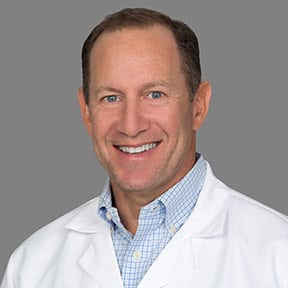Opioid overdose is the leading cause of accidental death in the United States. Many are not aware that opioid overdose deaths could potentially be prevented with NARCAN® Nasal Spray and emergency medical intervention. NARCAN® (generic naloxone) Nasal Spray can reverse the effects of an opioid overdose in minutes. Research shows that 44 percent of opioid-related deaths in states evaluated had a bystander present, but naloxone overdose reversal medications were rarely administered. With naloxone Nasal Spray available over the counter, more people have access to this life-saving medicine and can quickly act in an opioid emergency when every second counts. By carrying it on the go or keeping it in a first aid kit, anyone can be the difference between life and loss.
Celebrities are also taking notice and getting involved. Emergent BioSolutions Inc. announced it is teaming up with football icon/hall of famer, Emmitt Smith. The goal is to break down the stigma around opioid use and accidental overdose, which continues to fuel a national epidemic impacting people from all walks of life. During his decorated 15-year professional career, Smith faced multiple injuries and often chose to play through the pain, because he knew the risks associated with opioids as he witnessed promising athletes develop a dependency, lost teammates to accidental overdose and watched loved ones struggle. Emergent, along with Smith, are launching
Ready to Rescue to create open dialogue about opioid risks and educate the public on how to be prepared to help save a life in an opioid overdose emergency.
What is Naloxone?
Naloxone’s mechanism of action is a fascinating example of how modern medicine can intervene in life-threatening situations with precision. It operates by countering the effects of opioids in the brain, which is critical during an overdose. Here’s a closer look at how naloxone works:
Targeting Opioid Receptors
Opioids exert their effects by binding to specific proteins called opioid receptors, which are found on nerve cells in the brain, spinal cord, gastrointestinal tract, and other parts of the body. When opioids bind to these receptors, they can produce effects such as pain relief, sedation, and euphoria, but also dangerous side effects like respiratory depression, which is the primary cause of death in opioid overdoses.
The three main types of opioid receptors are Mu, Delta, and Kappa, with Mu receptors being the most relevant in the context of opioid overdose. Activation of Mu receptors triggers the opioid effects, including the hazardous reduction in breathing rate.
How Naloxone Works
Naloxone acts as an opioid antagonist, specifically targeting and binding with high affinity to the Mu opioid receptors in the brain. It has a stronger binding affinity than most opioids, which means it can effectively displace opioids from these receptors without activating them. By doing so, naloxone can quickly reverse the effects of opioid intoxication, particularly the life-threatening respiratory depression.
Rapid Onset
One of naloxone’s advantages is its rapid onset of action. When administered during an opioid overdose, naloxone can begin to reverse the effects within minutes, depending on the method of administration. Intravenous administration yields the fastest onset, but intramuscular or intranasal applications are more commonly used in emergency situations due to ease of use and safety.
Duration of Action
It’s crucial to note that naloxone’s duration of action is shorter than that of many opioids. This means that the effects of the opioid can return after the naloxone wears off, potentially leading to a reemergence of overdose symptoms. As such, medical attention is required even after naloxone administration to monitor the individual and administer further doses if needed.
Safety and Limitations
Naloxone is considered safe and effective, with few side effects when used as directed. Its administration in the setting of opioid overdose is generally well-tolerated. However, it can precipitate withdrawal symptoms in individuals dependent on opioids, including nausea, headache, sweating, rapid heart rate, and agitation. These effects, while uncomfortable, are not life-threatening.
Importantly, naloxone is ineffective against non-opioid drugs. In cases where an overdose involves multiple substances – a common occurrence – naloxone will only counter the effects of the opioid component. Drugs such as Xylazine, a potent anesthetic often combined with illicitly produced Fentanyl, is not responsive to Naloxone.
How is Naloxone Administered?
Naloxone can be administered in several ways, including nasally through a nasal spray (Narcan) and by injection. Its ease of use makes it accessible not only to healthcare professionals but also to anyone who may encounter an individual at risk for opioid overdose.
The Importance of Naloxone
The significance of naloxone in the fight against the opioid epidemic cannot be overstated. With the rise in opioid-related deaths, having naloxone easily accessible can mean the difference between life and death. It provides a critical window of opportunity for medical intervention, allowing time for emergency medical services to arrive and administer further treatment. It’s particularly vital in communities heavily affected by opioid misuse and addiction, acting as a frontline defense in preventing fatal overdoses.
Efforts to Increase Accessibility
Jackie and David Siegel are the epitome of resilience, philanthropy, and entrepreneurial spirit. As the monarchs of an empire built on the foundation of hard work and innovation, David, the founder of Westgate Resorts, and Jackie, his partner both in life and in their numerous charitable endeavors, have carved out a legacy that transcends the boundaries of their business achievements. The couple gained international fame through the 2012 documentary “The Queen of Versailles,” which offered a glimpse into their ambitious project to build one of America’s largest and most luxurious homes, aptly named “Versailles.” Beyond the glitter and opulence, their story is one of depth, characterized by their unwavering commitment to various causes, including their passionate fight against drug abuse following the untimely death of their daughter, Victoria.
Jackie Siegel, with her radiant presence and compassionate spirit, has become a beacon of hope and an advocate for change, using her personal experience to fight tirelessly against the opioid epidemic. Meanwhile, David Siegel’s visionary leadership and philanthropic efforts echo his desire to leave a lasting impact on the world. Together, they embody a dynamic duo of unstoppable force, using their influence to foster positive change and to spread awareness on critical societal issues. Their journey is a testament to the power of turning personal tragedy into a global mission.
Their connection with naloxone, draws from the Siegels’ devastating loss of their daughter Victoria Siegel, who died at the age of 18 due to a drug overdose. This tragedy deeply impacted the Siegel family and propelled Jackie and David into advocacy against drug abuse.
The Siegels became vocal advocates for increased awareness and accessibility of naloxone, aiming to prevent similar tragedies in other families. They have used their platform to promote understanding and education about addiction and the opioid crisis affecting many communities across the United States and beyond.
The Siegels’ advocacy efforts include speaking at events, participating in opioid crisis awareness campaigns, and supporting initiatives that aim to combat the widespread issue of drug addiction. Their work in this area highlights how personal tragedy can transform individuals into activists, working towards making a significant difference in societal issues.
Beyond the Siegals, recognizing the importance of naloxone, there have been concerted efforts to increase its accessibility. President Biden’s Unity Agenda efforts aim to beat the overdose epidemic. The U.S. Department of Health and Human Services (HHS) and the General Services Administration (GSA) announced that they are recommending that all federal facilities across the nation include overdose reversal medications in their safety stations on site.
https://www.federalregister.gov/public-inspection/2023-28207/guidance-guidelines-for-safety-station-programs-in-federal-facilities
The recommendation will make life-saving medications like naloxone more readily available in case of an emergency situation.
Policies have evolved to allow pharmacists in many regions to offer naloxone without a prescription, enabling friends, family, and those at risk to carry the medication on them. Additionally, many public health organizations and community groups conduct naloxone training sessions, distributing the medication free of charge to individuals who need it most.
Overdose education and naloxone distribution (OEND) programs have demonstrated significant effectiveness in reducing death rates from opioid overdoses. These programs not only distribute naloxone but also educate the public about recognizing and responding to an overdose, emphasizing the crucial role of calling emergency services even after naloxone administration.
Challenges and Controversies
Despite its life-saving potential, naloxone’s wide scale adoption faces challenges. Stigma surrounding drug use and misconceptions about naloxone can hinder its distribution and use. Some argue that the availability of naloxone may encourage drug use, though research shows that access to naloxone does not increase opioid use and, instead, saves lives.
But big hurdles remain, said Dr Bharath Chakravarthy, an emergency physician at the University of California, Irvine, and other providers who treat people who are addicted to opioids.
Those hurdles include regulations and medical deserts that limit access to the drug, as well as stigma and the failure of some providers to distribute the drug.
“It is definitely beneficial that this is available over the counter,” but the “real issue is patients are not getting their naloxone that way”, said Chakravarthy, who practices in California, where naloxone has been available without a prescription since 2016.
Chakravarthy likens health providers urging people to carry naloxone to dentists encouraging patients to floss.
If you tell them to pick either item up at a drug store, they may do so.
“But if you send that person
home with floss, you have a way better chance of them using it,” he said. It’s “a very similar concept with naloxone”.
https://www.theguardian.com/society/2023/may/19/naloxone-opioid-epidemic-drug-overdose-deaths
Conclusion
Naloxone’s ability to swiftly and effectively reverse the life-threatening effects of opioid overdose has made it an indispensable tool in the fight against the opioid crisis. Its targeted mechanism of action—displacing opioids from their receptors and reversing respiratory depression—underscores the power of scientific understanding and medical intervention in saving lives.
As the opioid crisis continues to pose a significant public health challenge, naloxone stands out as a beacon of hope. It is a powerful tool that can save lives in moments of dire need. As part of a comprehensive approach to combat opioid addiction and overdose, naloxone’s role is indisputable. Efforts to increase its availability and normalize its use are crucial steps toward mitigating the devastating impact of opioid misuse and overdose on society.

Dr. Kenny Spielvogel Resume
Dr. Kenneth Spielvogel is a board-certified Physician with a focused interest in addiction medicine. He is dedicated to providing comprehensive and compassionate care to patients throughout all stages of life. With nearly 30 years of experience, he combines his expertise with a genuine warmth and attentiveness, making him a trusted choice for patients seeking personalized healthcare. From Inspiration to Dedication: Inspired by his father’s career in medicine, Dr. Spielvogel followed his own path, choosing to specialize initially on women’s health. Seeing the devastation of drug and alcohol use disorders on his patients, he focused his continuing education on all aspects of addiction medicine. He continues to integrate this knowledge into both inpatient and ambulatory care.
Areas of Expertise:
Dr. Spielvogel offers a wide range of services, including:
- Menopause and hormone replacement therapy (HRT)
- Family planning and infertility
- Abnormal bleeding disorders
- Minimally invasive surgery and robotics
- Preconception counseling and prenatal care
- Annual exams and preventative care
Full scope treatment of addiction and recovery A Personalized Approach:
Dr. Spielvogel believes in building strong relationships with his patients. He takes the time to understand their individual needs and concerns, tailoring his approach to ensure they feel heard and supported. He also speaks fluent Spanish, enabling him to serve a diverse community. Beyond the Exam Room: Dr. Spielvogel is passionate about empowering patients to make informed decisions about their health. He enjoys counseling patients on healthy lifestyle choices, including weight management, and stays up-to-date on the latest advancements in all aspects of healthcare.
Education and Affiliations:
- Medical Degree: George Washington University School of Medicine
- Residency: University of Colorado Health Sciences Center
- Board Certification: American Board of Obstetrics & Gynecology
Affiliations:
MemorialCare Medical Group Long Beach, Pediatrix Medical Group Consultant and clinical care member for both One Method and Carrara treatment centers
Take the first step with Carrara Treatment



